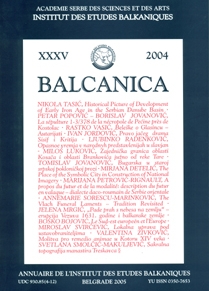

Land an der Donau. Herausgegeben von Günter Schödl. Berlin: Siedler Verlag 1995, 719 Seiten (= Deutsche Geschichte im Osten Europas). Soziologie und Geschichte. Geschichte der Soziologie. Beiträge zur Osteuropaforschung. Herausgegeben von Bálint Balla, Anton Sterbling. Hamburg: Dr. R. Krämer Verlag 1995, 262 Seiten. Klemens Ludwig: Ethnische Minderheiten in Europa. Ein Lexikon. München: Beck 1995, 232 Seiten (= Becksche Reihe 115). Moshe Carmilly - Weinbeger: Istoria evreilor din Transilvania (1623-1944) [Die Geschichte der Juden in Siebenbürgen]. Bucureşti: Editura Enciclopedicã 1994, 191 Seiten, 16 Abbildungen, 1 Karte, 1 Tabelle (= Bibliotheca Judaica, Band 1). Antal G. László: Situaþia minoritãþii etnice maghiare în România [Die Situation der ungarischen ethnischen Minderheit in Rumänien]. Odorheiu Secuiesc: A.C.H.R. [Asociaþia Culturalã Haáz Rezsõ], 56 Seiten. Siebenbürgen zur Zeit der Römer und der Völkerwanderung. Herausgegeben von Wolfgang Schuller. Köln, Weimar, Wien: Böhlau Verlag 1994, 276 Seiten, Abbildungen und Karten (= Siebenbürgisches Archiv, Band 29). Ioana Bratu: Lokale Ortsnamen in den auf dem Gebiet Rumäniens gefundenen Inschriften. Bochum: Universitätsverlag Dr. N. Brockmeyer 1992, 162 Seiten (= Kurier Rumänischstudenten, Beiheft 3). Christian Schesäus: Historia Annae Kendi – Die Geschichte der Anna Kendi – Istoria Anei Kendi – Kendi Anna Históriája. Übersetzung, Einleitung und Textgestaltung: Joachim Wittstock, Gernot Nussbächer und Andrea Szász. Übersetzung ins Rumänische: Valeria Cãliman, ins Ungarische: Hegedüs István. Cluj-Napoca: Dacia; Gundelsheim: Arbeitskreis für Siebenbürgische Landeskunde 1995, 110 Seiten. Ferenc Pölöskei: István Tisza. Ein ungarischer Staatsmann in Krisenzeiten. Budapest: Akadémiai Kiadó 1994, 164 Seiten (= Studia Historica Academiae Scientiarium Hungaricae, Band 198). Christoph Klein: Anvertraute Pfunde. Gustav Adolf Klein und die Hermannstädter allgemeine Sparkassa. Köln, Weimar, Wien 1995, VIII und 262 Seiten, 8 Abbildungen (= Schriften zur Landeskunde Siebenbürgens, Band 18). Richard A. Zintz: Im Wandel. Erinnerungen eines Siebenbürger Sachsen aus der ersten Hälfte dieses Jahrhunderts. Herausgegeben von Richard Zintz. Bremen: Selbstverlag 1995, 161 Seiten. Albertine Hönig: Der weite Weg oder Das Buch von Workuta. Herausgegeben von der Arbeitsgemeinschaft für Südostdeutsche Volks- und Heimatforschung, Bad Tölz. Bukarest: ADZ Verlag [= Verlag der Allgemeinen Deutschen Zeitung für Rumänien] 1995, 254 Seiten. Hans Wolfram Hockl: Sarah. Unerhörte Schicksale 1933-1995. Linz: Verlag Denkmayr 1995, 312 Seiten, 2 Abbildungen. Ion Iliescu: Aufbruch nach Europa. Rumänien – Revolution und Reform 1989 bis 1994. Köln, Weimar, Wien: Böhlau 1995, 324 Seiten. Nordsiebenbürgisch-Sächsisches Wörterbuch, Band IV: N – Sch. Herausgegeben von Gisela Richter unter Mitarbeit von Helga Feßler aufgrund der nachgelassenen Sammlungen von Friedrich Krauß.
More...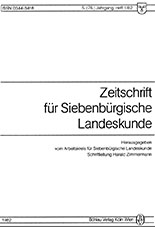
revies of (among others): Thomas Nägler, Die Ansiedlung der Siebenbürger Sachsen, Kriterion-Verlag: Bukarest 1979, 259 S. Kirche zwischen Anpassung und Widerstand. Referate einer Tagung des Hilfskomitees der Siebenbürger Sachsen im Frühjahr 1980. (Hg. von Gerhard Möckel unter Mitarbeit von Balduin Herter und Georg Wenzel.) München: Selbstverlag d. Hilfskomitees der Siebenbürger Sachsen 1980. Dictionar de literatură romană. Scriitori, reviste, curente [Lexikon der rumänischen Literatur, Schriftsteller, Zeitschriften, literarische Strömungen], Editura Univers Bucureşti, 1979 Viorel Cosma, Zweitausend Jahre Musik auf dem Boden Rumäniens. Einführung in die Geschichte der rumänischen Musik. Aus dem Rumänischen von Klaus Kessler, Bukarest: Ion Creanga-Verlag 1980 Constantin C. Giurescu & Dinu C. Giurescu: Geschichte der Rumänen. Aus dem Rumänischen übersetzt von Adolf Armbruster. Bukarest: Wissenschaftlicher und enzyklopädischer Verlag 1980. Eduard Eisenburger: Sie erkannten die Zeichen der Zeit. Rumäniendeutsche politische Zeit- und Lebensbilder aus zwei Jahrhunderten. Cluj-Napoca: Dacia Verlag 1979. Carl Schuchhardt: Die Burg im Wandel der Weltgeschichte. Unveränderter Nachdruck der Auflage von 1931. Frankfurt a. M.: Wolfgang Weidlich Verlag 1981 Lexikon zur Geschichte der Parteien in Europa. Unter Mitarbeit zahlreicher Fachgelehrter, hrsg. von Frank Wende, Stuttgart: Kröner Verlag, 1981
More...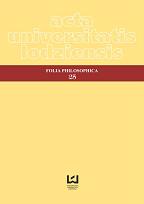
Keywords: plurality of methods; Wolff’s philosophy; Wolff
The main goal of the article is to demonstrate that (against general opinion) Wolff used not one but few different research methods in his philosophy. Except mathematical (more geometrico), there were semiotic, eidetic and reflective ones. Moreover I indicate the presence of reductive, transcendental, and rhetorical method elements in Wolff’s works. Each of this methods are represented in this article in details with an examples of their usage by Wolff. The choice of the methods and the structural relation between them are not coincidental. In the current article I try to prove that the heuristic epistemological primacy in Wolff’s philosophy belongs not to the mathematical but to eidetic method. Speaking of the relation type between eidetic method and the rest of them – semiotic, reflective and axiomatic (mathematical one) – I would define it as: (1) genetic dependence, since eidetic method is the reason of existence of the rest of the methods, (2) heuretic dependence, while eidetic one gives the opportunity for the reflection over the rest of the methods, and (3) epistemological dependence, while eidetic method provides criteria of truth (reliability) of the knowledge for the rest of methods.
More...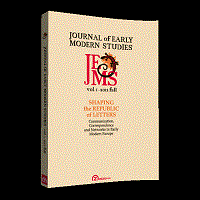
Keywords: Bayle; critical practice; superstition; error; credulity; scepticism; Dictionnaire Historique et Critique; paratext; Aymar; divining rod; Republic of Letters; toleration
Pierre Bayle’s Dictionnaire Historique et Critique, a landmark in intellectual history, is a curious text. Originally intended as a collection of all errors, it became an encyclopedia of everything, enfolding rampantly growing footnotes that commented on every imaginable topic. Instead of looking at Bayle’s theoretical statements in the Dictionnaire, I explore Bayle’s writing practice, his critical method and his practice of forming judgments. A close study of the textual, paratextual and contextual characteristics of the first entry of the Dictionnaire (the entry “Abaris”) allows me to find out how Bayle made up his mind at every stage during a contemporaneous controversy on divination. In this way, we are able to see Bayle’s mind in action while he is judging the contradictory information he receives and the to-and-fro movement of changing opinions he is confronted with. This examination yields new insights in Bayle’s practical attitudes towards key issues in his oeuvre, including scepticism, rationalism, superstition and tolerance. At the same time, the article clarifies how Bayle was involved in the Republic of Letters and how he related to his local context in Rotterdam.
More...Christian J. Jäggi: Nationalismus und ethnische Minderheiten. Zürich: Orell Füssli Verlag 1993, 281 Seiten. Alan Sked: Der Fall des Hauses Habsburg. Der unzeitige Tod eines Kaiserreiches. Aus dem Englischen von Stephen Tree. Berlin: Siedler Verlag 1993, 352 Seiten. Titus Podea: Transilvania. Transylvania. Bucureşti: Editura Fundaþiei Culturale Române o. J. [1993], 230 Seiten. Dervla Murphy: Transylvania and Beyond. London: John Murray Ltd. 1992, 239 Seiten. Studii de istorie a Transilvaniei. Specific regional şi deschidere europeanã [Studien zur Geschichte Siebenbürgens. Regionale Besonderheit und europäische Öffnung]. Coordinatori Sorin M i t u, Florin Gogâltan. Cluj: Asociaþia Istoricilor din Transilvania şi Banat 1994, 258 Seiten. Adolf Armbruster: Romanitatea românilor. Istoria unei idei [Die Romanität der Rumänen. Geschichte einer Idee]. Ediþia a II-a revãzutã şi adãugitã [2. überarbeitete und ergänzte Auflage]. Bucureşti: Editura Enciclopedicã 1993, 342 Seiten (Buchreihe: Colecþia „Biblioteca enciclopedicã de istorie a României“). Mircea Dogaru: De la Esculeu la Alba Iulia. Un mileniu de istorie româneascã în cronistica şi istoriografia ungaro-germanã [Von Esculeu (903) bis Alba Iulia (1918). Ein Jahrtausend rumänischer Geschichte in der ungarisch-deutschen Chronistik und Geschichtsschreibung]. Bucureşti: Comisia Românã de Istorie Militarã – Institutul de Istorie şi Teorie Militarã 1993, 186 Seiten. Mikrofilmarchiv der deutschsprachigen Presse e. V. (Hg.): 9. Bestandsverzeichnis. Dortmund 1994, 456 Seiten. Diethard Knopp: Die römischen Inschriften Dakiens im siebenbürgischen Unteralt-Zibinbekken und ihr geschichtlicher Hintergrund. Bonn: Habelt 1993, 365 Seiten, Tafeln und Karten (= Habelts Dissertationsdrucke, Reihe Alte Geschichte, Heft 35) Şerban Papacostea: Românii în secolul al XIII-lea. Între cruciatã şi imperiul mongol [Die Rumänen im 13. Jahrhundert. Zwischen Kreuzzug und Mongolenreich]. Bucureşti: Editura endiclopedicã 1993, 188 Seiten. Georgius de Hungaria: Tractatus de moribus, condictionibus et nequicia Turcorum. Traktat über die Sitten, die Lebensverhältnisse und die Arglist der Türken. Nach der Erstausgabe von 1481 herausgegeben, übersetzt und eingeleitet von Reinhard Klockow. Köln, Weimar, Wien: Böhlau Verlag 1993, 420 Seiten (= Schriften zur Landeskunde Siebenbürgens, Band 15). Liviu Maior: Alexandru Vaida-Voevod între Belvedere şi Versailles (Însemnãri, memorii, scrisori). [A.V.-V. zwischen B. und V. (Aufzeichnungen, Erinnerungen, Briefe)]. [Cluj]: Editura Sincron 1993, 295 Seiten. Andrea Schmidt – Rösler: Rumänien nach dem ersten Weltkrieg: Die Grenzziehung in der Dobrudscha und im Banat und die Folgeprobleme. Frankfurt am Main u. a.: Peter Lang Verlag 1994, 544 Seiten (= Europäische Hochschulschriften Reihe III, Band 622). Karl M. Reinerth: Zur politischen Entwicklung der Deutschen in Rumänien 1918-1928. Aus einer siebenbürgisch-sächsischen Sicht. Bad Tölz; Thaur/Tirol:
More...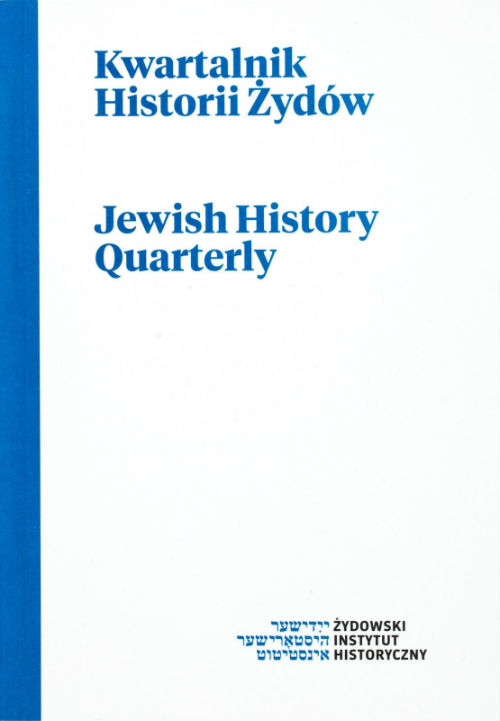
Neo-Marxist Approach to Anti-Semitism - review of the book: Piotr Kendziorek, antysemityzm a społeczeństwo mieszczańskie, by August Grabski; Janusz Spyra, Żydzi na Śląsku Austriackim (1742-1918) - review by Jerzy Tomaszewski; Yekhezkel Kotik, Journey to a Nineteenth-Century Shtetl - review by Jerzy Tomaszewski; A. Milchman, A. Rosenberg, Eksperymenty w myśleniu o Holokauście - review by Piotr Kendziorek; Sławomir Jacek Żurek, Synowie księżyca - review by Jan Doktór; Review of Foreign Periodicals by Jan Rochwerger
More...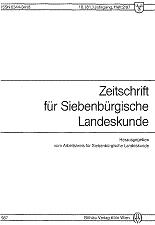
Hermann und Alida Fabini: Kirchenburgen in Siebenbürgen Maja Philippi: Die Bürger von Kronstadt im 14. und 15. Jahrhundert Friedrich Müller, Deutsche Spachdenkmäler aus Siebenbürgen Frankdieter Grimm: Rumänien. Landeskundlieber Überblick Günther H. Tontsch: Das Verhältnis von Partei und Staat in Rumänien Cornel Irimie, Nicolae Dunäre, Paul Petrescu (Hrsg.): Märginenii Sibiului Georg Böhm (Hrsg.): Senndorf in Siebenbürgen Martin Weiss: 740 Jahre Billak in Siebenbürgen Michael Klöster (Hrsg.): Dürrbach, Schicksal eines deutschen Dorfes in Siebenbürgen H.[aritonj Tiktin, Rumänisch-Deutsches Wörterbuch
More...Urkunden-Regesten aus dem Archiv der Stadt Bistritz in Siebenbürgen. Begründet von Albert Berger (†). Mit Ioan Dordea, Ioan Drãgan und Konrad G. Gündisch herausgegeben von Ernst Wagner. III. Band (1571-1585). Köln, Weimar, Wien: Böhlau Verlag 1995 (= Schriften zur Landeskunde Siebenbürgens Band 11/III), XVIII und 601 Seiten. Eduard Albert Bielz: Handbuch der Landeskunde Siebenbürgens. Eine physikalisch-statistisch- topographische Beschreibung. Unveränderter Nachdruck der Ausgabe Hermannstadt 1857. Als Festgabe für Ernst Wagner zum 75. Geburtstag im Auftrag des Arbeitskreises für Siebenbürgische Landeskunde herausgegeben von Konrad Gündisch. Köln, Weimar, Wien: Böhlau Verlag 1996. XVII, VIII, 613 Seiten (= Schriften zur Landeskunde Siebenbürgens Band 19). 120 de ani arhivã publicã în Transilvania. 120 Jahre öffentliches Archiv in Siebenbürgen. Culegere jubiliarã. Jubiläumsband. Coordonator/Koordinator Monica Vlaicu. Traduceri/Übersetzungen Karin Denghel, Anneliese Thudt, Monica Vlaicu. Sibiu/Hermannstadt: Editura Tenis-Club-Sen 1996, 188 Seiten. Mittelalterliche nationes, neuzeitliche Nationen. Probleme der Nationenbildung in Europa. Herausgegeben von Almut Bues und Rex Rexheuser. Wiesbaden: Harassowitz Verlag 1995 (= Deutsches Historisches Institut Warschau – Quellen und Studien Band 2), 195 Seiten. Stände und Landesherrschaft in Ostmitteleuropa in der frühen Neuzeit. Herausgegeben von Hugo Weczerka. Marburg: Verlag Herder- Institut 1995, VIII und 210 Seiten (= Historische und landeskundliche Ostmitteleuropa- Studien 16). Ständefreiheit und Staatsgestaltung in Ostmitteleuropa. Übernationale Gemeinsamkeiten in der politischen Kultur vom 16.-18. Jahrhundert. Herausgegeben von Joachim Bahlcke, Hans- Jürgen Bömelburg, Norbert Kersken. Leipzig: Universitätverlag 1996, 353 Seiten (= Forschungen zur Geschichte und Kultur des östlichen Europa). Die völkerrechtliche Praxis der Donaumonarchie von 1859 bis 1918. Eine Auswahl von Dokumenten. Herausgegeben von Stephan Verosta und Ignaz Seidl – Hohenveldern. Wien: Verlag der Österreichischen Akademie der Wissenschaften 1996, 2 Bände (=Veröffentlichungen der Kommission für Völkerrecht und internationale Beziehungen, Nr. 2), XXV und 665 Seiten. Beiträge zur siebenbürgischen Schulgeschichte. Herausgegeben von Walter König. Köln, Weimar, Wien: Böhlau Verlag 1996 (= Siebenbürgisches Archiv Band 32), VIII und 335 Seiten. Die Letzten der Verbannten. Der Untergang der altösterreichischen Landler in Siebenbürgen/Rumänien. Herausgegeben von Roland Girtler. Wien, Köln, Weimar: Böhlau 1997. 222 Seiten, 15 Abbildungen. Alexandre Safran: „Den Flammen entrissen“. Die jüdische Gemeinde in Rumänien 1939-1947. Erinnerungen. Einführung von Jean Ancel. Tübingen, Basel: A. Francke Verlag 1996. 368 Seiten, 34 Abbildungen. D. Dr. Viktor Glondys. Bischof der Evangelischen Landeskirche A. B. in Rumänien. Tagebuch. Aufzeichnungen von 1933 bis 1949. Herausgegeben von Dieter Braeg und Johann Böhm. Dinklage
More...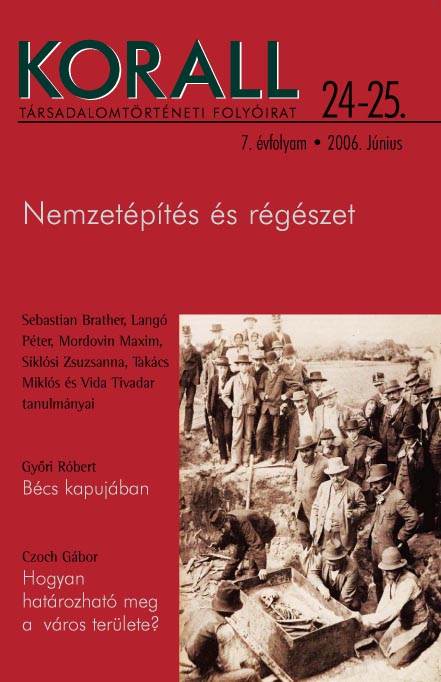
The question concerning the origins of the stately structure of the eastern Slavshas remained intriguing since the very beginning of its scholarly investigations.These were founded by the fi rst members of the Russian Academy of Science in the fi rst half of the eighteenth century. The earliest scientifi c views, partly basedon the previous traditions were formulated by two prominent historians of Germanorigin: Gottlieb Siegfried Bayer and Gerhardt Friedrich Müller. They can beregarded as the fathers of the so called norman-theory. Their opinion concerningthe important (if not determining) role of the northern, namely Scandinavian,tribes in the formation of the early Russian state was almost immediately critisisedby Mikhail Lomonosov, the well known Russian scientist. The discussionstarted just before the rise of the local nationalisms has been continuing until thepresent days having a strong infl uence fi rst on the historical and later also on thearchaeological studies. The objective research of the Varangian’s real role in theearly Russian history was very often obstructed by the current political circumstances,e.g. Napoleonic wars, rising Russian nationalism, the 1917-revolution,the marrism, the Soviet-Russian chauvinism etc. The main purpose of this articleis to give a brief outline of the development of the normannism-antinormannism,and to show its connection with the contemporary political situation from thevery beginning until the recent events.
More...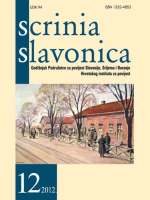
Keywords: Dora Pejačević; history of reading; individual reading; reading diary; books; literature; philosophy; music; Našice
The composer Dora Pejačević (1885-1923) was born in Budapest, but she grew up in a family palace in Našice where she composed most of her compositions. The most important piece of her compositions is her Symphony in F Sharp Minor for Full Orchestra Op. 41. (1916/7; 1920). The first performance of her Symphony was in Dresden in February 1920, conducted by Edwin Lindner. Dora Pejačević had a great passion for books and reading, so she recorded all the books she was reading in her reading diary - My Book Record. My Book Record was a printed notebook which contains three parts: Books I have read, Books I wish to read and Books worth reading. In this article the author analyses this reading diary, which Dora Pejačević was writing between 1902. and 1921. From perspective of the history of reading the author analyses: what, how much, when, where and how the composer was reading. The author puts the books and the writers from the reading diary in several categories: books according to the language and themes, writers according to their sex and nationality. In the supplement to the article the author gives a transcription of the biggest part of the composer’s reading diary which was named Books I have read.
More...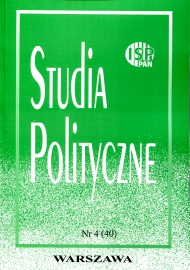
Keywords: technology;intelligence;microelectronics;espionage;Polish People's Republic;Cold War;
As part of the political détente in the international arena in the late ’60s and ’70s, Polish intelligence followed the Soviet pattern and dramatically developed the department responsible for gathering information on science and technology, in terms of personnel and organization. The intensification of activities in this direction led, on the one hand, to the development of a strong relationship between the Polish research and development sector and industry, and on the other hand, to the operational potential of intelligence. The transfer of information technology and microelectronics has been in the foreground of this cooperation since the first half of the ’70s. Every year, the Polish economy was becoming increasingly dependent on activities that were deemed illegal under international commercial and patent law, e.g., smuggling equipment, stealing economic secrets and copying design solutions. However, the situation became particularly dramatic after the US and CoCom tightened restrictions with the economic embargo against the Soviet Union and Poland at the beginning of the ’80s. The list of recipients of the black-market technologies, including those made by leading manufacturers such as DEC, IBM and Honeywell, included both the research, experimental and production centres of the Polish People’s Republic (PRL) that supplied the civilian (commercial) market, and those associated with the army and the Interior Ministry. The PRL’s intelligence analysis activity intensified with the growing rivalry between the US, the EEC and the ASEAN for global hardware and software markets. They began to look closely at the IT policies implemented in various highly developed countries around the world, and to track the global diffusion of computer trends.
More...
Keywords: litotes; grand narrative; small narrative; anthropological theatre; Teatr Węgajty
This article is an excerpt of the author's MA thesis: Litotes in the anthropological theatre’s grand narrative. The case of Teatr Węgajty/ Projekt Terenowy. It analyses the attitude of the anthropological theatre towards principles that constituted its foundation, such as the fascination with the traditional culture and work in the local community. The anthropological theatre’s grand narrative is replaced by the small narrative of teatr potrzebny (‘theatre of necessity’), which originates from the excluded, forgotten litotes. The paper provides documentation and an analysis of teatr potrzebny, taking the example of the work of Teatr Węgajty/Projekt Terenowy in a Social Welfare Home in Jonkowo.
More...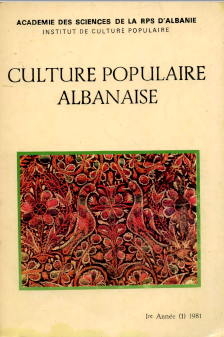
LA DELEGATION ALBANAISE AU IVe CONGRES DE L' ASSOCIATION INTERNATIONALE DES ETUDES DU SUD-EST EUROPEEN (ALESEE)<br />LE MUSEE HISTORIQUE DE LIBBAZHD<br>LE MUSEE D'ART MEDIEVAL ALBANAIS A KORCE<br />ACTIVITES 19'76-1980 DE L'INSTITUT DE CULTURE POPULAIRE<br />LE DEUXIEME CONGRES INTERNATlONAL DU FOLKLORE TURC (33-38. VU981)<br />LA IV SEMAINE DE CULTURE DES ALBANAIS D'ITALIE <br />LE IVe FESTIVAL DES JEUX POPULAIRES<br />UNE EXPEDITION DE RECHERCHES DANS LES INSTALLATIONS ALBANAISES DE LA CALABRE<br />INAUGUREE A SHKOD:i1:R L'EXPOSITION NATIONALE DE LA CULTURE POPULAIRE<br />LA CONFÉRENCE NATIONALE SUR LES PROBLBMES DE L'ÉDIFICATION SOCIALISTE<br /> RÉUNION COMÉMORATIVE A L'OCCASION DU CINQUANTENAIRE DB L'ASSASSINAT DE SHTJEFEN GJEÇOVI<br /> UN SYMPOSIUM SUR LE FESTIVAL FOLKLORIQUE NATIONAL 1978 RÉUNION COMMÉMORATIVE SUR LE C.ENTENAIRE DE LA MORT DE ZEF JUBANI UNE CONFÉRENCE SCIENTIFIQUE AU CENTENAIRE DE LA NAISSANCE DU PROF. A. XHUVANI DISSERTATIONS
More...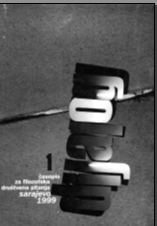
Keywords: Arabian nights;
Dvije hulje, nastojeći da budu trgovci, prišipetljali su se nekojem putujućem trgovcu, prethodno se saglasivši da od njega opljačkaju sve što ima. Međutim, svaki je od ove dvojice lopova donio odluku prigrabiti cijeli plijen samo za sebe, te tako svaki zatrova hranu onoga drugog. I tako oni umriješe, a onaj trgovac nastavi zdrav i čitav svojim putem. Ovako izgleda priča Trgovac i dvije varalice' u Hiljadu i je d n o j noći. Verzija u biti iste priče, koja je jasnije i uvjerljivije strukturirana, pojavljuje se u Kanterberijskim pričama (The Canterbury Tales) pod naslovom 'Praštaočeva priča', u kojoj tri izgrednika kreću da bi našli Smrt koja je ubila četvrtog čovjeka u njihovom društvu. Neki misteriozni stari čovjek kazuje im da će naći Smrt pod tim i tim drvetom. Ali, umjesto Smrti, oni nalaze blago ispod drveta. A onda svaki poče snovati da ubije svog druga. Priča se završava njihovim uspjehom, i smrću njih sve trojice! Jedna ranija i prostija verzija, priče ovakvog tipa, nalazi se u drevnoj indijskoj zbirci priča poznatoj kao Jataka. Nedavna se prerada ove pripovijesti može naći u filmu Johna Hustona, 'Blago Siera Madre' – The Treasure of the Sierra Madre (1947).
More...
Keywords: nazism; euthanasia; Czechoslovakia; 1945-1990; documentation
For several decades after the end of WWII, the crimes committed against the lives and health of patients within the framework of Nazi “euthanasia” were of marginal interest. In socialist Czechoslovakia – incidentally as in the former GDR, for instance – crimes against groups marginalised for health reasons garnered little or even no attention; their victims were expelled from the collective memory. Documentation was closely linked to the official investigations carried out by the State Security (StB), which in the case of Czechoslovakia could have been submitted either in the immediate post-war period or in the 1960s. In terms of methodology, it was in the main subordinate to police practice and characterised by both a deficit of historical analysis and a lack of basic orientation in the subject. In view of the complicated nature of the issue it is therefore unsurprising that the conclusions – which essentially from the very beginning had no ambition to analyse Bohemian and Moravian materials in the broader context in which Nazi “euthanasia” was carried out – were in the end markedly superficial and contradictory and in all of the cases examined simply trailed off. However, there was merit in the fact that they managed to gather and record at least some testimonies and data that may today prove useful in historical research.
More...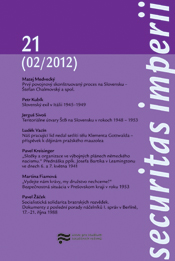
Keywords: Hungary; democracy;
For two decades Hungary, like the other Eastern European countries, followed a general policy of establishing and strengthening the institutions of democracy, rule of law, and a market economy based on private property. However, since the elections of 2010, when Viktor Orbán’s Fidesz party came to power, Hungary has made a dramatic U-turn. This article investigates the different spheres of society: political institutions, the rule of law, and the influence of state and market on one another, as well as the world of ideology (education, science and art), and describes the U-turn’s implications for these fields and the effect it has on the life of people. It argues against the frequent misunderstandings in the interpretation and evaluation of the Hungarian situation, pointing out some typical intellectual fallacies. It draws attention to the dangers of strengthening nationalism, and to the ambivalence evident in Hungarian foreign policy, and looks into the relationship between Hungary and the Western world, particularly the European Union. Finally, it outlines the possible scenarios resulting from future developments in the Hungarian situation.
More...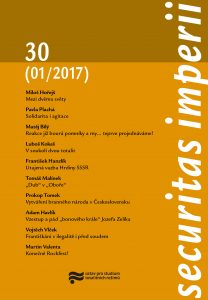
Keywords: anti-Communist resistance; anti-Nazi revolt; Vladimír Garncarz; Ladislav Fojtík; Czechoslovakia
The presented case study aims to outline the anti-Nazi revolt and anti-Communist resistance of Vladimír Garncarz and Ladislav Fojtík, two former partisans, and using comparison find common features within a broader framework of the war and postwar years in South-East and North-East Moravia. Garncarz and Fojtík’s joint journey began at the time of the Protectorate when they, together with their fathers, joined the anti-Nazi resistance in the Vsetín district, and continued at the turn of the 1940s and 1950s in the form of anti-Communist resistance. Their activity against the two totalitarian regimes included stealing of arms, sabotage and intelligence collection. After the communist coup they also started to cooperate with people with links to American and French secret services. While Garncarz carried out resistance operations in Czechoslovakia, Fojtík was trafficked to Austria with the help of Jan Vašek, a courier for the French intelligence service SDECE (Service de Documentation Extérieure et de Contre-Espionnage). He was trained to use a radio transceiver in Austria and what was then West Germany and later he returned to Czechoslovakia in order to create an intelligence network and send the collected information abroad. At the beginning of 1952 the activities of the two men were uncovered and mass arrests followed. At that moment their ways parted. While Garncarz spent years in prison and remained a convinced anti-Communist for the rest of his life, Fojtík started to cooperate with the State Security (StB). StB sent him back to Austria at the end of 1952, where he was supposed to collect information on Czechoslovak émigrés with links to SDECE. However, he was soon uncovered and arrested. He managed to flee and return to Czechoslovakia before he was sentenced in 1954. Later, StB provided him with a new identity and relocated him from the Vsetín district to the Plzeň district, where he served within the “agency network” until the mid 1960s. He met a premature death in an avalanche during a mountaineering expedition in the Tatras in 1966.
More...